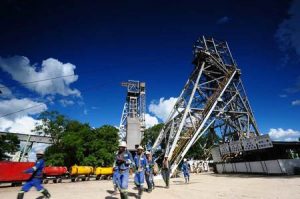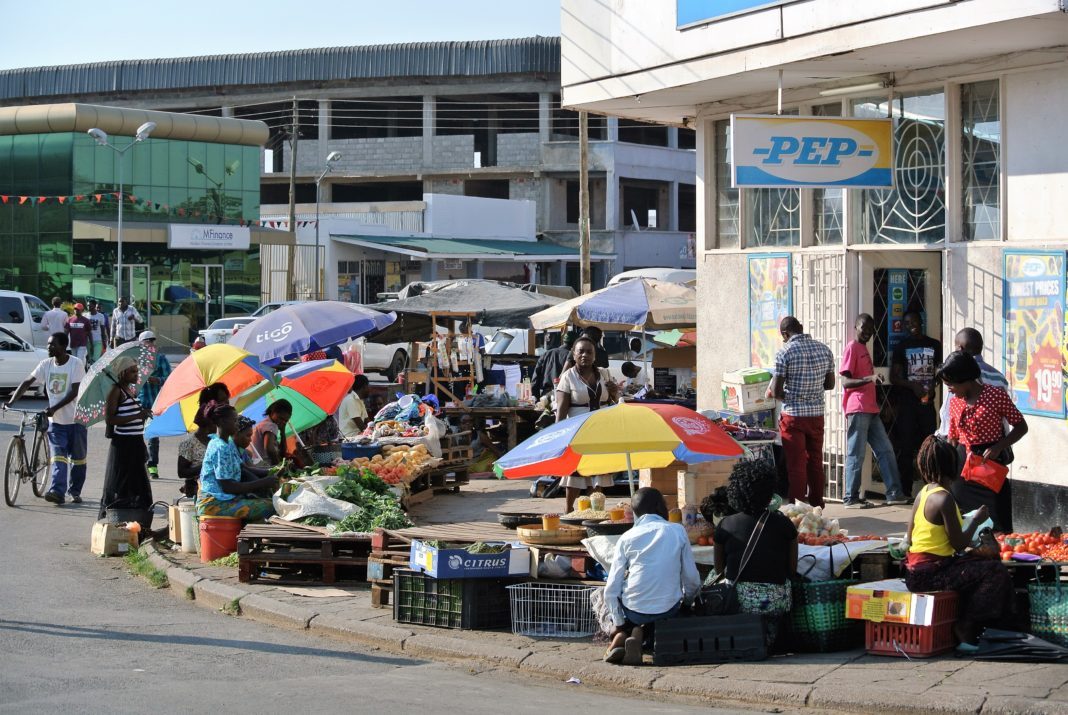For a place that was referred to as a “ghost town” not so long ago, and has known more ups and downs than a rollercoaster, the Copperbelt mining town of Luanshya seems to be doing pretty well.
Shoprite, Zambia’s leading supermarket chain, is building a second store there. It will be more upmarket, much bigger and will stock a wider range of products. The store is part of a brand-new shopping mall under construction in the town centre.
Shoprite competes with Pick n’ Pay, who set up in Luanshya about three years ago. If the presence of shoppers is anything to go by, both stores are doing well, which suggests underlying strength in the disposable income of the town’s residents.
There are other telltale signs of economic activity in Luanshya, over and above the bustling streets and shops. A drive around the neighbouring townships suggests that a mini-boom of residential property is under way, with dozens of new homes under construction or recently completed.
According to Robert Kamanga, deputy CEO of CNMC Luanshya Copper Mines, farming is also picking up in the fertile land around Luanshya. Commercial farmers in the nearby Mpongwe area are growing soya, beans and wheat, and processing some of their products into cooking oil and chicken feed. Golden Lay, a Luanshya-based company, produces thousands of trays of eggs a day for the local and regional market. The company is expanding thanks to $24 million of investment funding secured in 2012 from private-equity firm Phatisa, which focuses on developing Africa’s agricultural potential.
There is a cautious sense of optimism in Luanshya, but it comes with some uncomfortable questions. How sustainable is it? What if the mine closes again? The last question is particularly pertinent, as Luanshya Mine was the very first mine to be privatised in 1997, and its fortunes have risen and fallen ever since.
“The fortunes of the town are closely tied to the fortunes of the mine”
Just as residents of earthquake-prone cities live with the memory of the last quake which flattened their town, residents of Luanshya remember when the newly privatised Luanshya Mine closed down in 2000 after its owners, the Ramcoz Group, ran into financial difficulties. Thousands of miners were laid off, businesses and shops closed, and many residents left, turning Luanshya into the proverbial “ghost town”. It was only after 2004 that the town’s fortunes were revived as the mine’s new owners, the Enya Group, got production going again. However, the revival was short-lived, for world metal prices plunged in 2008 on the back of the global financial crisis. Unable to weather the storm, Enya Group sold out to China Non-Ferrous Metals Mining Company (CMNC group) in 2009 – with hindsight, perhaps a hasty decision, for the copper price recovered shortly afterwards.
CNMC promptly set about bringing Luanshya Mine into the 21st century, and invested nearly half a billion dollars in the operation. The underground operations were modernised, the concentrator plant was upgraded, a new open-pit mine was built, a slag (waste) reclamation project was started, and a state-of-the-art leach plant was constructed on ground that previously had been bush.
So, what did this $500 million investment yield? Within five years, annual copper production had nearly doubled to 18 000 tonnes, and employment had gone from just over 600 people to nearly 3 000. Furthermore, the mine paid $60 million in corporate tax over the period (mainly mineral royalty tax, company income tax and duty) and its employees paid some $31 million in personal income tax.
“A rusty mine was restored to a vital entity,” says a CNMC commemorative book published in 2014 to celebrate the first five years. “Since CNMC took over, this hundred-year-old mine has been transformed [and] Luanshya town has also been economically revitalised.”
Luanshya continues to benefit from this five-year growth period, despite the mine’s underground operations and slag reclamation project being put on care-and-maintenance earlier this year because of the nationwide power restrictions on the mining industry.

“It has affected around 2 000 miners – many are on recess and receive an allowance; some have resigned and others have opted for a voluntary separation package,” says deputy CEO Kamanga. “Fortunately, our new open-pit mine is doing very well, and is now fully ramped up to its target production rate of 40 000 tonnes a year.”
Clearly, the town’s fortunes are tied to those of the mine. But the mine won’t last forever, and will reach the end of its working life around 2025. What should Luanshya be doing in the meantime?
“The answer is economic diversification, and that can only happen with the right incentives and policies in place from central government,” says Kamanga. “There is a 10-year window of opportunity to get this right. Otherwise, when the mine closes, Luanshya will become a ghost town again. Businesses will close. People will leave. Livelihoods will be affected. And all the money presently being invested and spent here will have been wasted.”
This point is echoed by Simukondi Godwell, chairman of the Luanshya District Business Association. A body belonging to the Zambia Chamber of Small and Medium Business Associations, its members are mainly shop owners, contractors, suppliers, agro-businesses and market owners.
“Government needs to create the financial and tax incentives that will make Luanshya an attractive business destination in its own right,” says Godwell. “Once large, sustainable businesses are operating here, they will create countless opportunities for smaller businesses and suppliers to feed off.”
Like many of his colleagues in the Luanshya District Business Association, he sees agriculture as offering the most potential to investors. “We can develop agro-businesses here and feed the nation. What crop doesn’t grow in this region?”
Ultimately, says Godwill, a diversified Luanshya economy capable of outliving the closure of the mine comes down to political will on the part of government. “If there is political will, there won’t be a problem. We will grow. But with no political will, nothing will happen.”
The gauntlet has been thrown down. In the meantime, businesses continue to invest in Luanshya, people continue to move to the town, and CNMC Luanshya Copper Mines continues to produce copper for world markets.

























